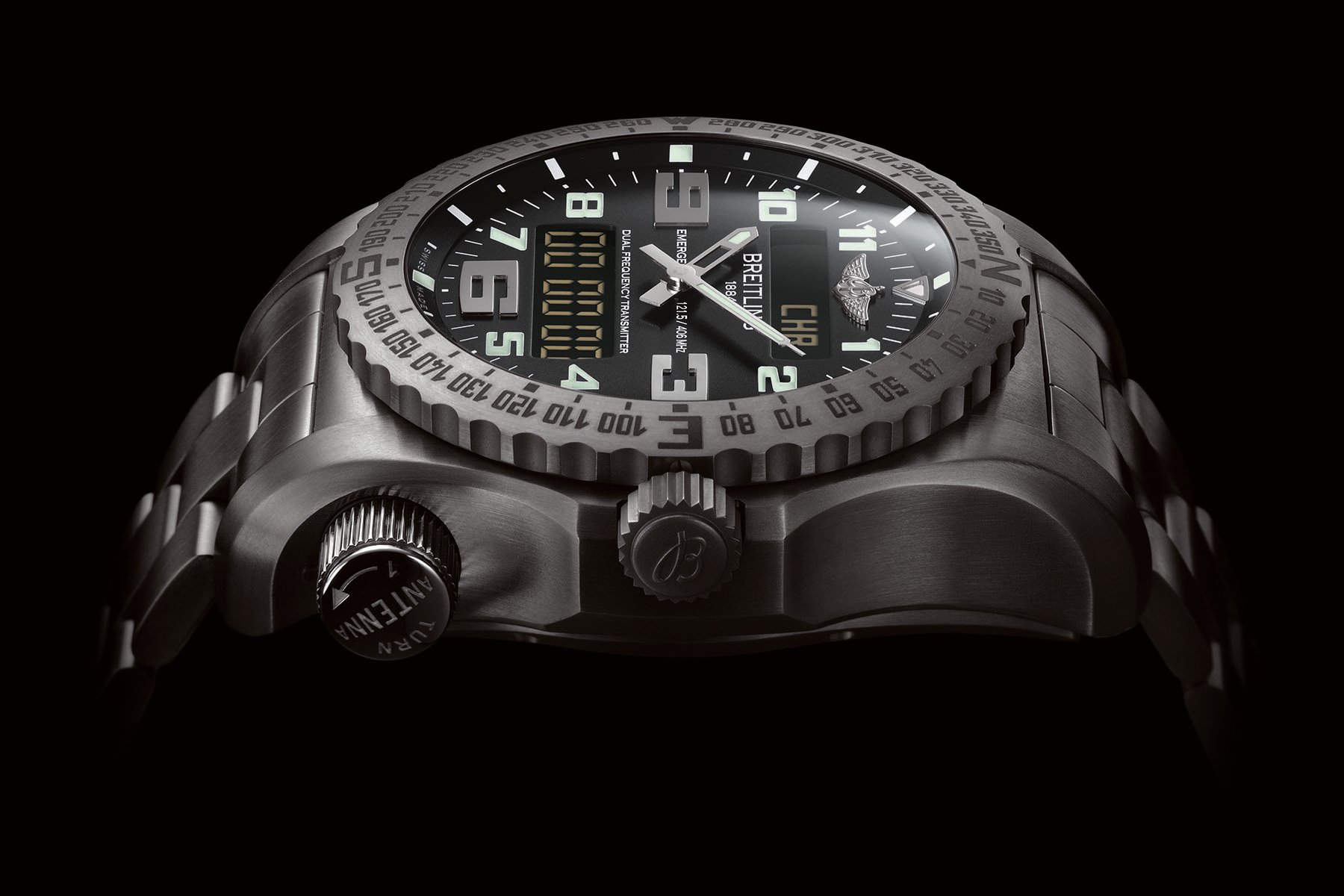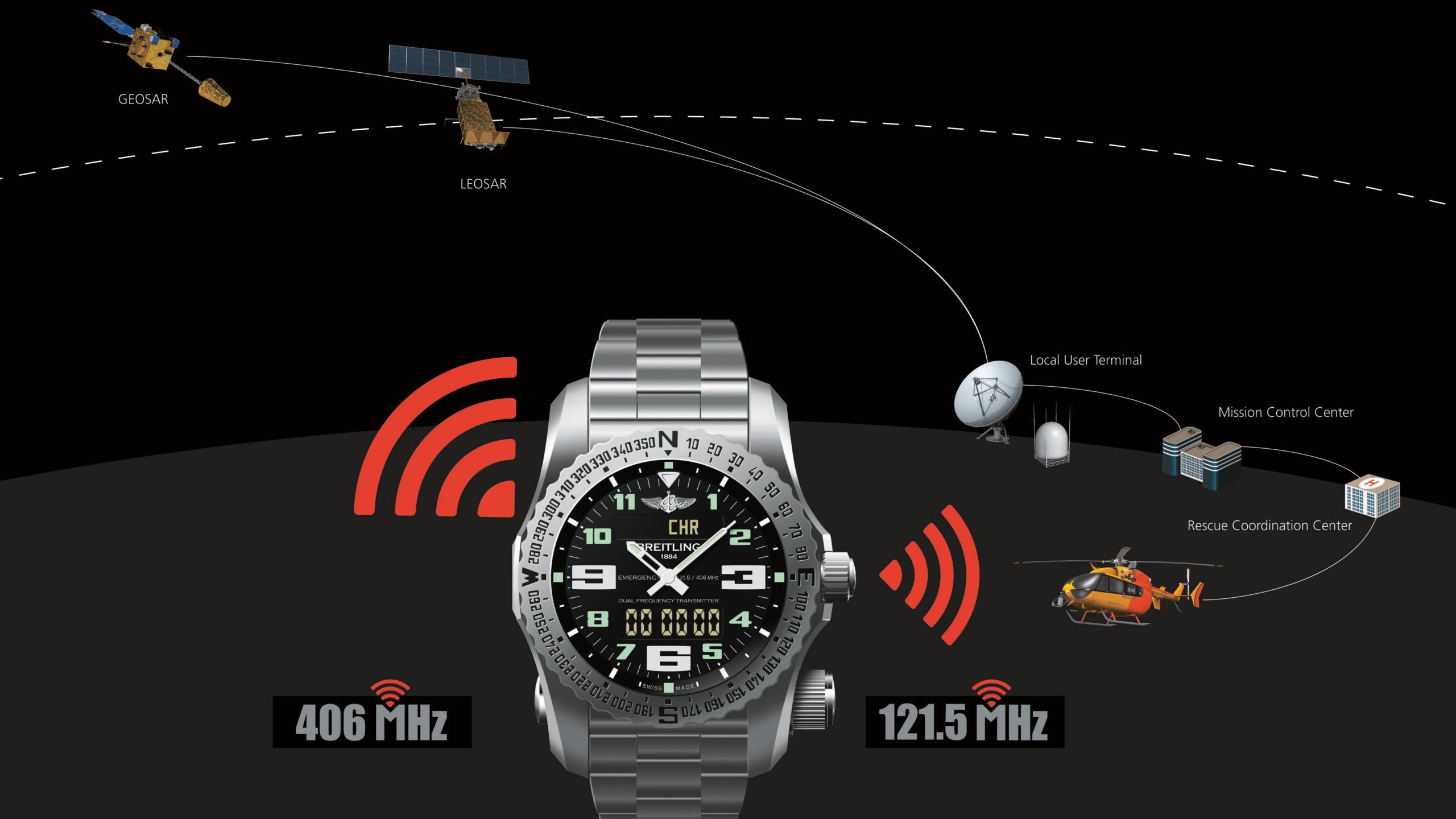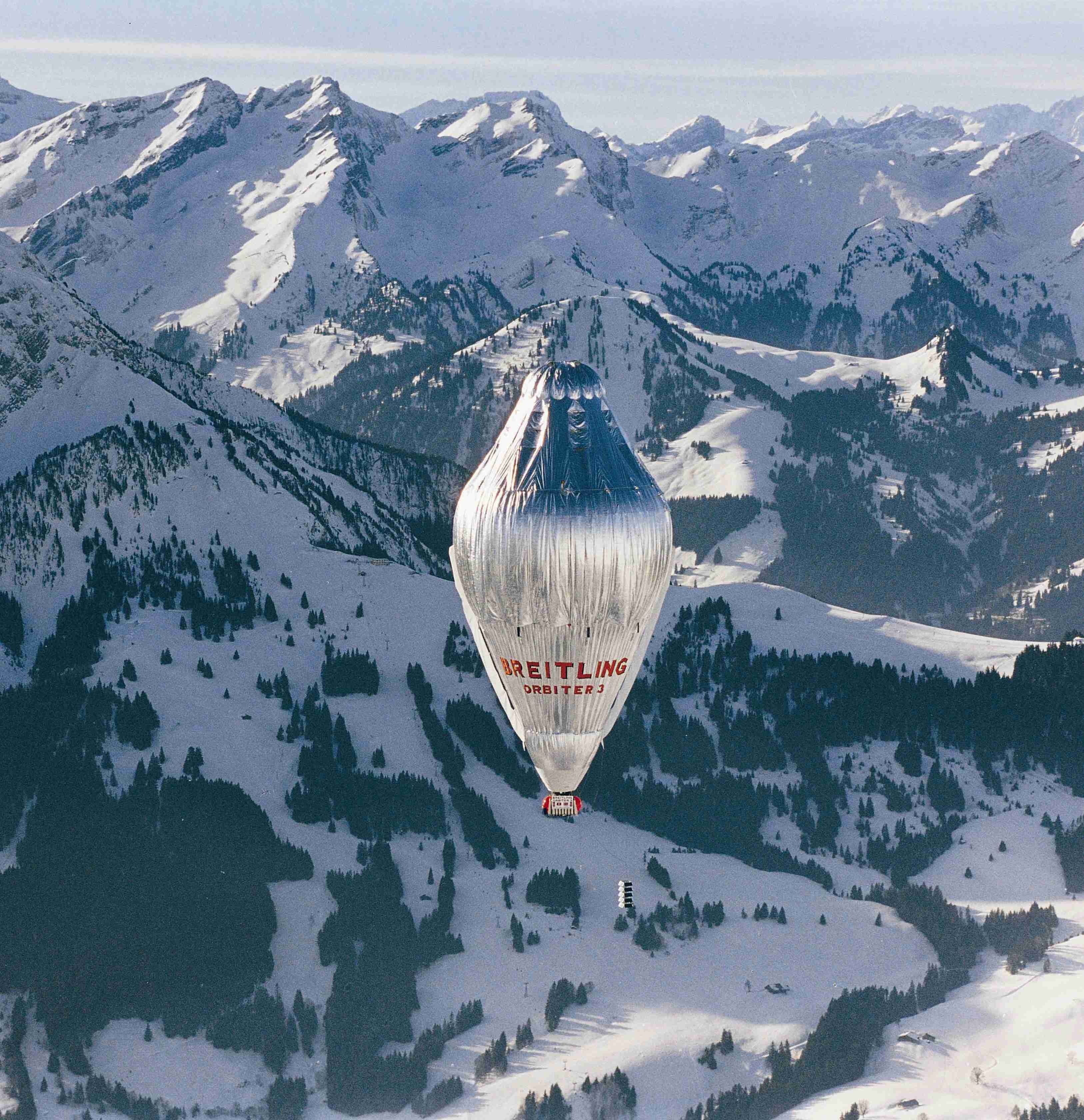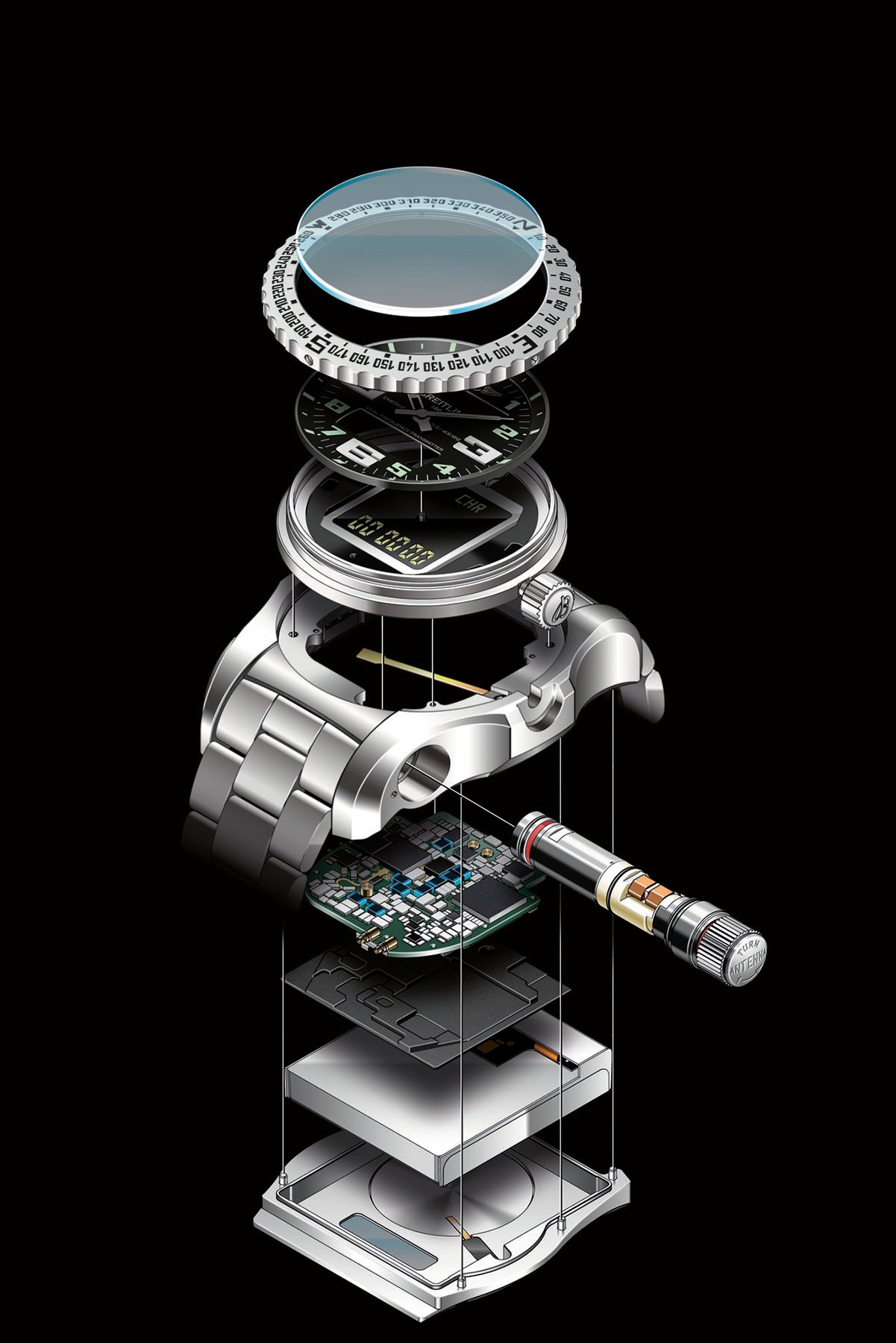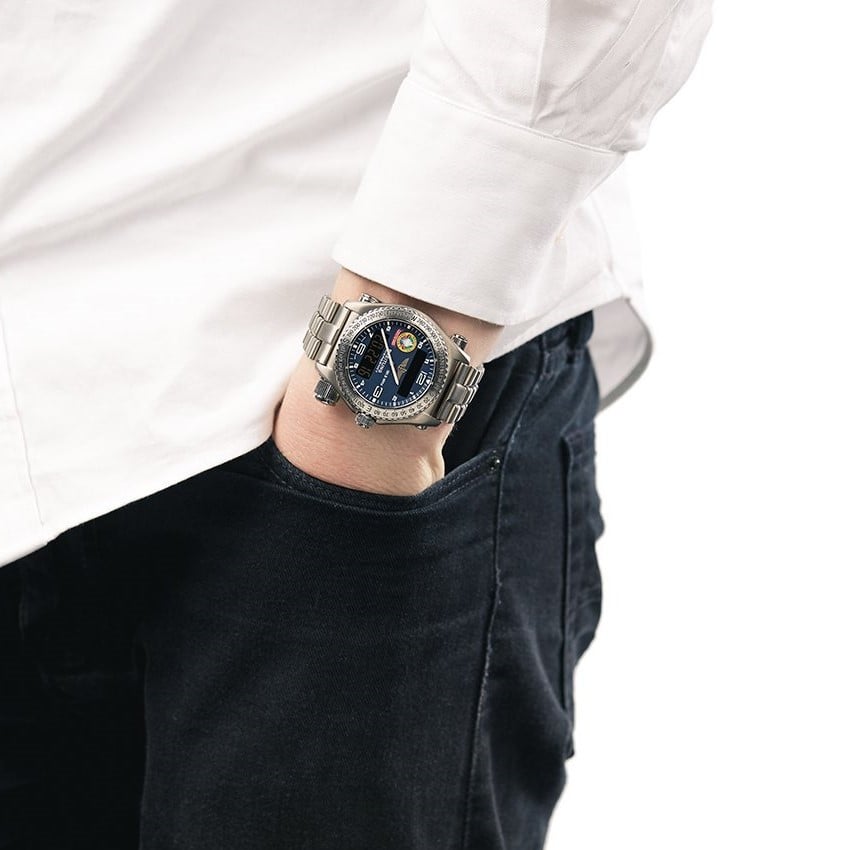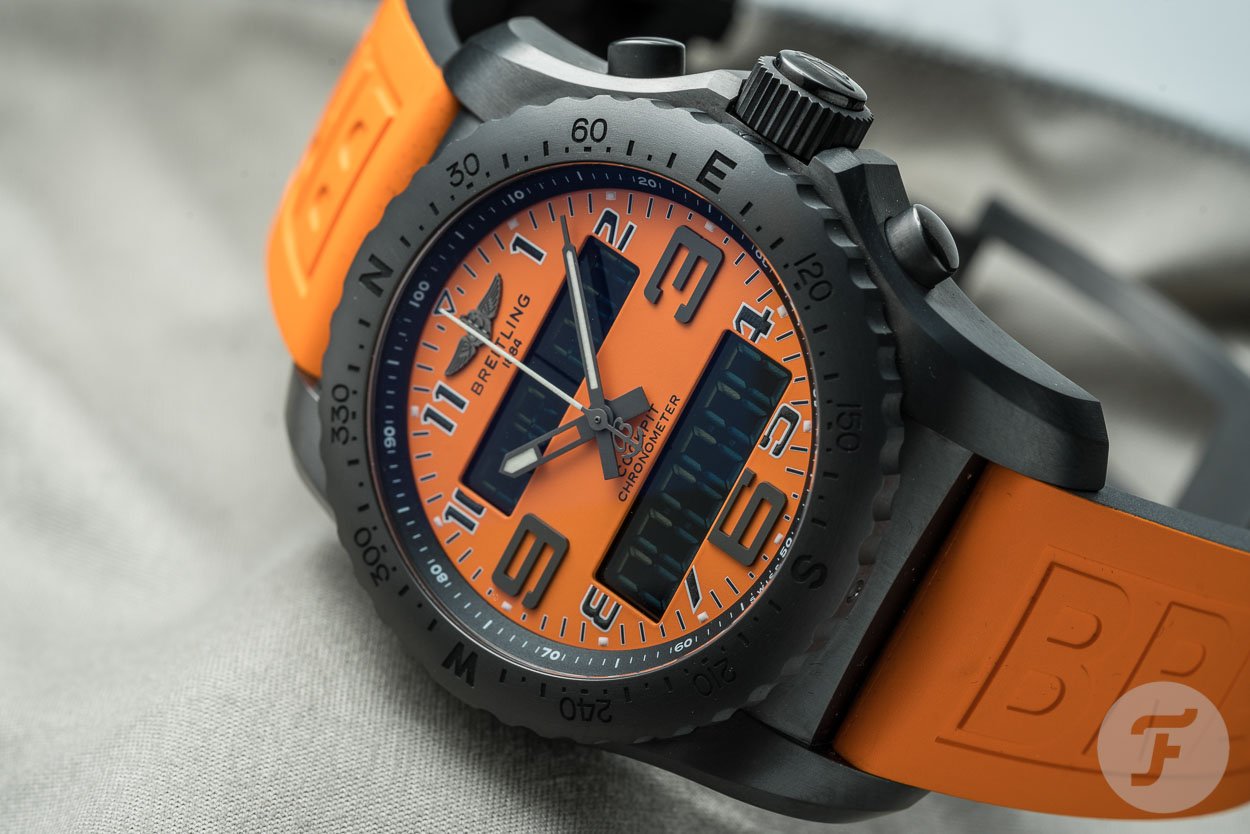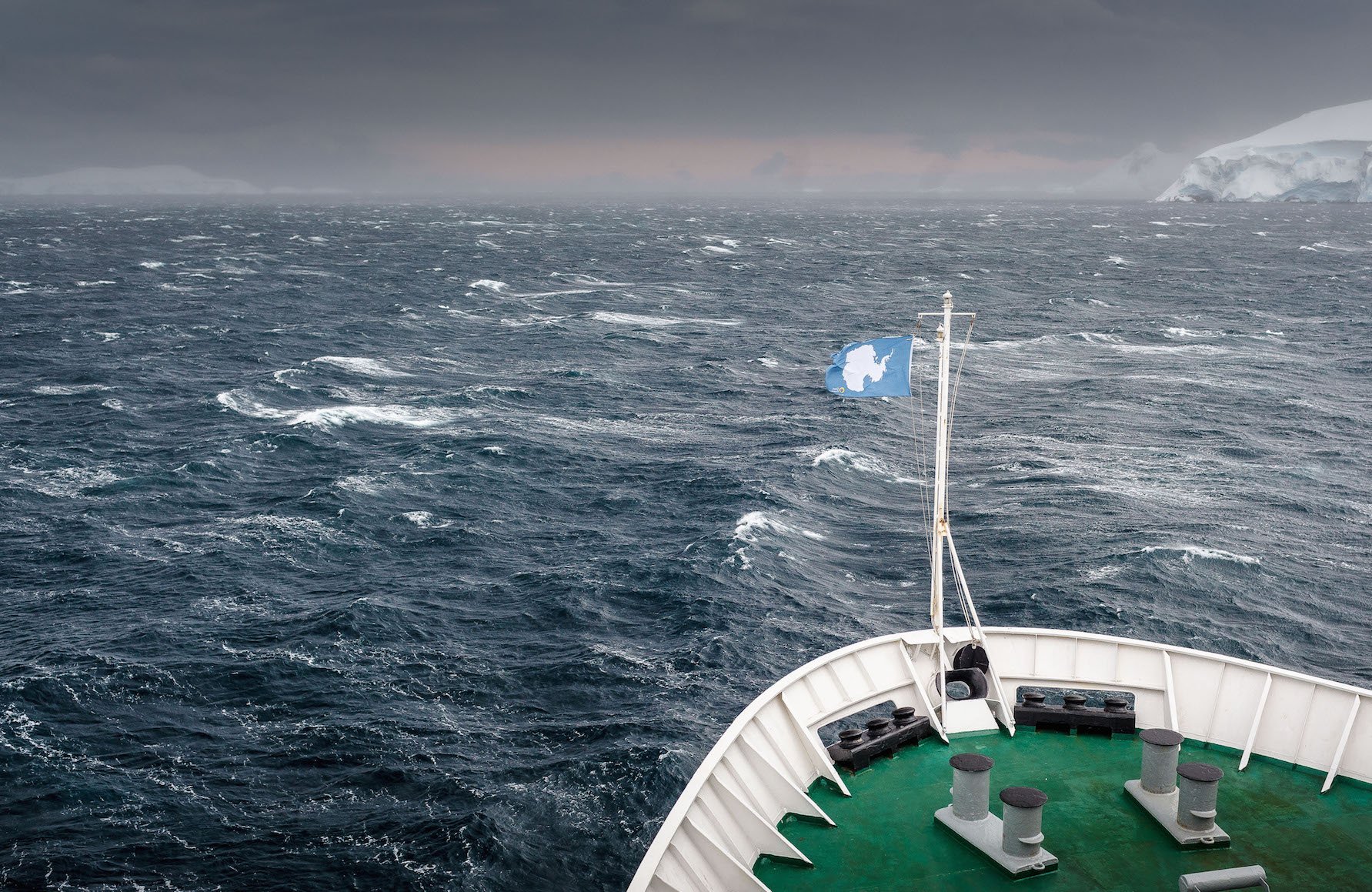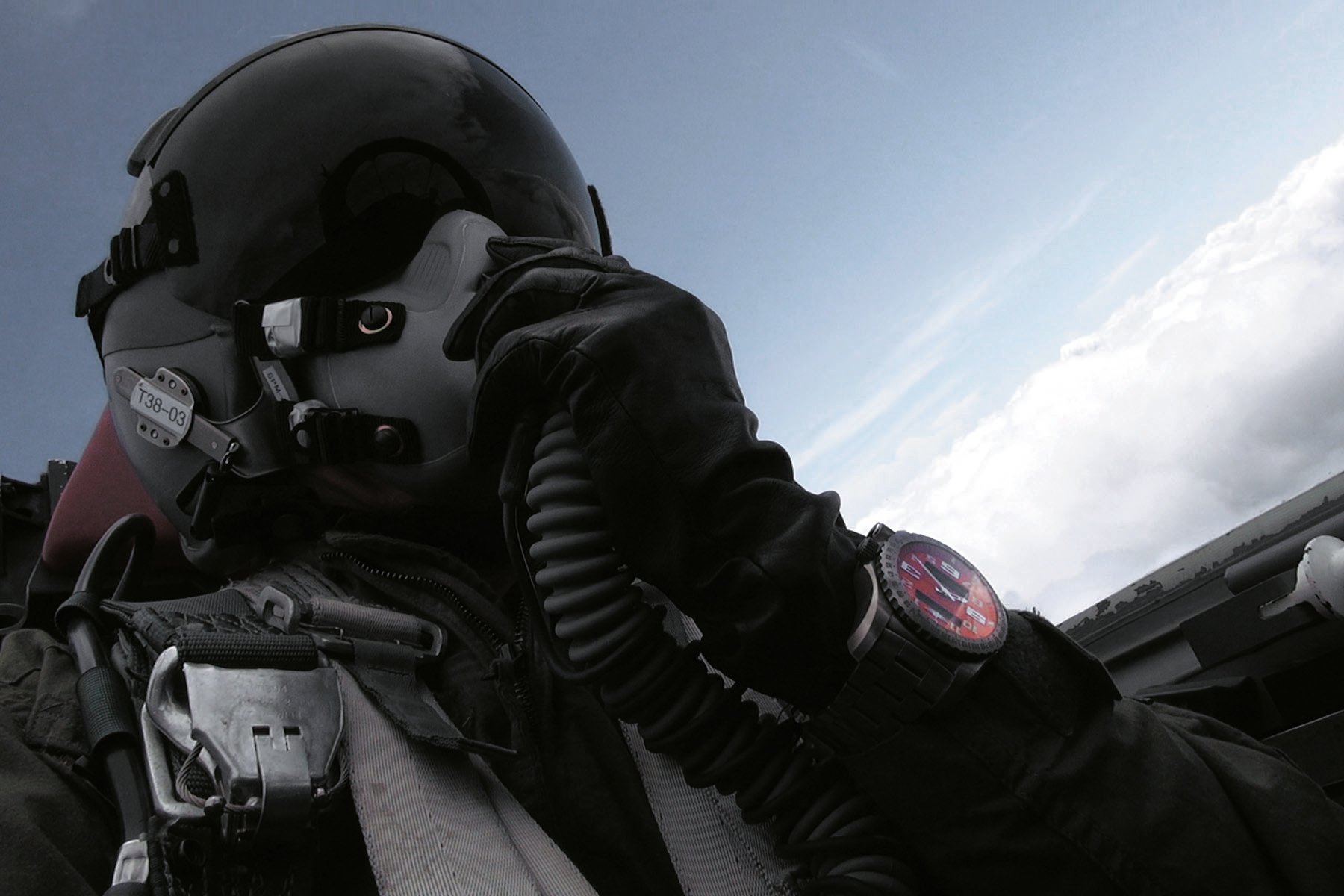The Breitling Emergency And Its Tales Of Survival
We tend to tell romanticized stories of brave men and women in survival situations. As watch lovers, we find ourselves drawn to the wrists of these heroes and heroines. A watch worn during an adventure can take on a character of its own. And for those of us that can’t get enough of these little tickers, they can make or break the story of survival itself.
How many of you have pointed at your Omega Speedmaster, explaining to a non-watch aficionado that it went to the Moon? Or how the Speedy helped bring the Apollo 13 astronauts back to Earth? Maybe you drone on about the Rolex Deepsea Sea-Dweller diving into the depths of the Mariana Trench? Perhaps you prefer to talk about the Smith’s Explorer summiting Mount Everest? You may find your audience has been bored into a coma by the time you get stuck into your tale. The truth is, we reiterate these stories as it connects our passion for luxury playthings to real-world events. But what about watches designed for survival in the modern era?
The Breitling Emergency
Today, I am looking at the ultimate tool watch for the modern explorer. “What’s that?” I hear you say. Why, it is the Breitling Emergency, of course! Has there ever been a more OTT wristwatch? Sure, while the design is big and bold, it’s nowhere near as ostentatious and eye-catching as many other pieces. But none of them can summon a helicopter on-demand, so…
Launched in 1995, the Breitling Emergency was never meant to be a runaway commercial success. Its abilities were not only niche but also slightly terrifying. The prospect of accidentally dialing up a rescue team to come and pluck you from your cozy bed? Yeah, no thanks.
Danger
But for professionals operating in risky areas, this profound piece of kit was attractive from the get-go. It looked the part. It could take a severe beating. And, when push came to shove, there was nothing better for getting you out of a sticky situation. Those whose lives are frequently in danger swear by the additional safety features. In both generations of Emergency watches (Emergency from 1995 and Emergency II from 2013), the pull-out distress beacon is the core feature and is still unique amongst luxury timepieces.
Breitling Orbiter 3 non-stop global balloon flight
In March 1999, Bertrand Piccard and Brian Jones circumnavigated the globe in the first successful round-the-world flight in the Breitling Orbiter 3 balloon. It is still the most prolonged duration of an aircraft remaining airborne without stopping. However, Piccard and Jones didn’t make the trip in 80 days as novelized by Jules Verne, but rather, in 19 days. Breitling was growing impatient with the failure of Orbiter 1 and 2 and proclaimed that the Orbiter 3 would be the last attempt to be sponsored by the Swiss watch brand. Thankfully, three, as it often does, turned out to be a charm.
…both sides had to contend with adverse weather and maneuver around restricted airspace over China and Yemen.
The Breitling team was not alone in this global record attempt. Cable & Wireless sponsored a team that already had a head-start and surpassed the distance previously set by the Breitling Orbiter 2. However, both sides had to contend with adverse weather and maneuver around restricted airspace over China and Yemen. The Cable & Wireless team was still ahead and progressing well but elected to rely solely on solar power without any backup batteries.
A fateful decision
The extra power storage would’ve increased weight and fuel consumption. Nearing the Pacific Ocean, the balloon was positioned with the Sun on the wrong side of the solar panel. Quickly losing power, the Cable & Wireless team ascended to catch the light and compensate. It was a fateful decision, as ice gathered on the balloon during the ascent and added too much mass. Along with the dwindling power, the aircraft descended and eventually ditched into the ocean. With just enough time for the mayday call, the pilots were soon rescued.
Knowing the same fate could await them, the level of fear in Piccard and Jones was rising.
With the main competition out of the race, you would’ve thought Piccard and Jones would relax in their efforts. Hardly. Knowing the same fate could await them, the level of fear was rising. What they had in their favor were the Breitling Emergency watches strapped to their wrists. The beacon at the lower half of the case could be unscrewed and pulled for a distress signal to be pulsed to the nearest air and rescue forces if necessary.
Speeds of up to 100mph
They stayed airborne and continued the journey to the Sahara Desert, their finish line. The jet stream was favorable and helped them reach speeds of up to 100mph while also assisting with fuel efficiency. After 19 days, Bertrand Piccard and Brian Jones touched down in the middle of the Sahara Desert. As they waited for seven hours to be picked up, they noticed their last propane tank, not jettisoned, had only four inches of fuel left. Perfect timing or blind luck? You decide. But I think the truth is, you don’t break records of this magnitude without the rub of the green.
The gondola of the balloon is now on display at the Smithsonian National Air and Space Museum in Washington, D.C. There is also a fantastic documentary on YouTube that is worth watching. It covers this flight with onboard and hand-held cameras and footage shot by the pilots.
Buying your Breitling Emergency
The Emergency II is still available from Breitling but in short supply. Due to the insurance of providing an emergency distress beacon, there are extensive insurance forms to read and sign before purchase. Hence, the new Emergency IIs are only available in-store. For special pre-owned models, Breitling released the Emergency Orbiter 3 in 2000 to commemorate Jones and Piccard’s balloon flight. Like many special Emergency models, the Orbiter 3 features a unique insignia on the dial for a limited run of 1,999 pieces to mark the year of the flight. You can still find the occasional model on Chrono24, such as this listing.
For me, the orange-dialed Emergency worn by Brian Jones during the flight is more authentic to the mission. You can find it pre-owned on Chrono24 here. In either version, please heed the warnings on the case back about using this pin, though. Also, in some areas of the world, such as Australia, 121.5MHz is no longer detected by satellite. And from my own experience, Breitling will insist on a complete service for quartz watches over ten years old, even if it only needs a battery change. Service costs will vary depending on what is required but can add a lot to the total price of the watch.
Breitling Cockpit B50 Orbiter Limited Edition
At Baselworld 2019, Breitling marked 20 years since the first round-the-world balloon flight with the Breitling Cockpit B50 Orbiter Limited Edition of 213 pieces. While not an Emergency watch, it caters to those who don’t need the beacon technology but want the look in a smaller package. The styling, however, still pays respect to the daring Orbiter 3 mission. As you can imagine, all 213 pieces sold quickly, but few examples are available on Chrono24 at a premium of €10K over the original €7,950 RRP.
An emergency survival situation
In 2003, British ace helicopter pilot Quentin Smith and co-pilot Steve Brooks attempted the treacherous Drake Passage, a stretch of ocean between Antarctica and South America’s Cape Horn (of Shackleton fame). When the two were 450 miles into their 550-mile journey, the helicopter’s motor went silent, and the chopper went into autorotation — a slow descent akin to a plane gliding to ditch.
Deploying and steadying the raft in the rough and freezing seas was the priority, but after an hour, marking the location was the next. Quentin pulled the pin in his orange-dialed titanium Breitling Emergency, and the 121.5 MHz beacon signaled to the nearest response teams. Both pilots were rescued within nine hours despite being a moving signal in a 500mi2 body of water. There is no doubt the Breitling aided in their safe return.
In production since 2013, the Emergency II is the latest Professional survivor’s watch from Breitling, with more sophisticated frequency ranges and durable battery technology. The Aerospace suite of functions — chronograph, timer, alarm, calendar, minute repeater, and dual time — all feature on the Emergency II. But for €14,860, you get the sense that most of the cost is the insurance for the global rescue service. Real professionals may get an operational discount, however. Breitling has made efforts to miniaturize the inner workings as much as possible. But with 51mm diameter and considerable thickness, it won’t suit all wrists.
We might be seeing the Emergency II disappear from the store windows. This exodus may have already begun. But if you get the chance, it’s worth trying one on. And if you’ve always fancied one, now’s the time to pick one up. You can find out more about the Breitling Emergency here. Also, this site provides an excellent timeline of balloon flights from the early pioneers to modern record-breakers here.

